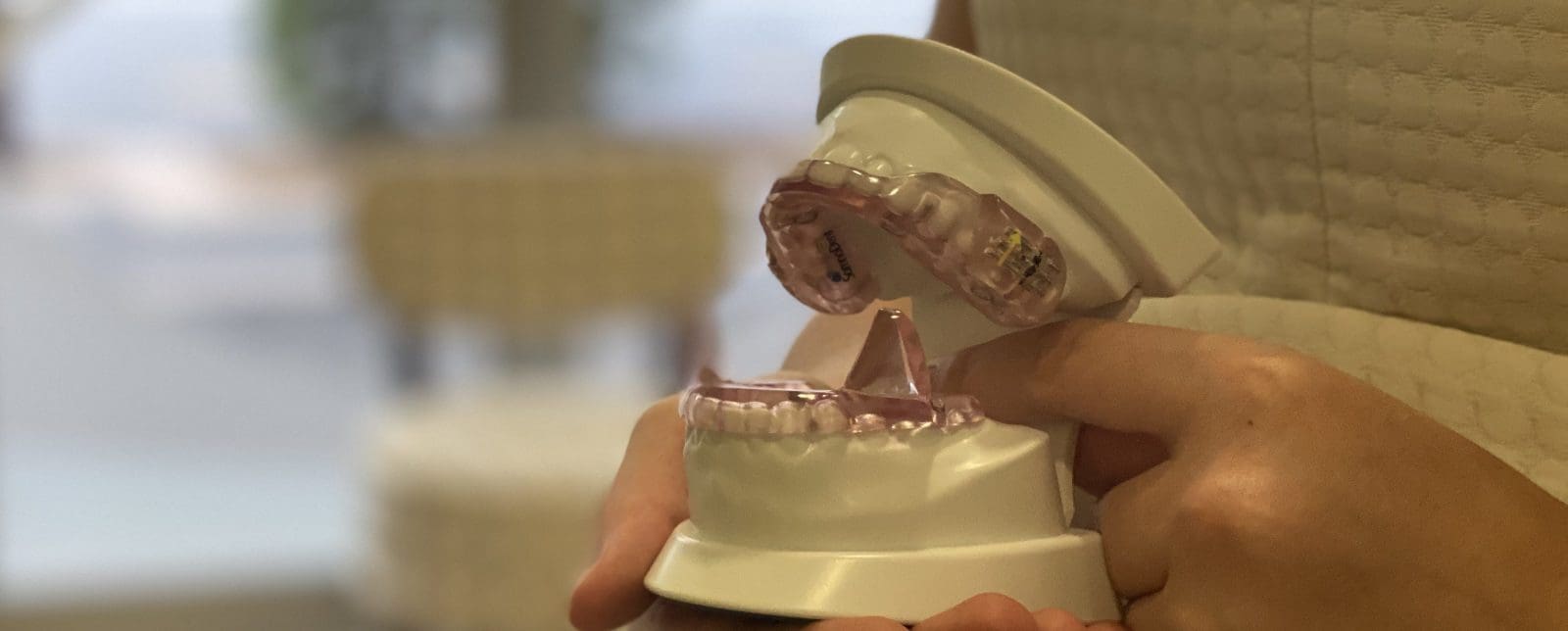What is a Mandibular Advancement Splint (MAS)?
If you are snoring or have been diagnosed with Sleep Apnoea, you may have been told to consider using a Mandibular Advancement Splint, also known as MAS. A mandiublar advancement splint fits over the teeth and gently pulls the jaw forward from its normal position. Our Brisbane dentist has partnered with Somnomed, makers of one of the worlds most researched and evidence based sleep appliances, to help our patients with sleep apnoea.
A mandibular advancement splint works by gently pulling the jaw forward. The aim is to prevent the walls of the airway collapsing during sleep when our bodies muscles relax as when the airway collapses, the walls vibrate against each other, resulting in snoring. Collapse of the airway also causes obstructive sleep apnoea, when the tongue and airway muscles collapse to partially or totally block the airway, telling the brain to wake up and gasp for more air. This prevents quality sleep, resulting in fatigue and other health problems.
This guide will help you evaluate the many Mandibular Advancement Splints available and why our Spring Hill dentist has chosen the quality of Somnodent sleep appliances.
The 5 things to look for in a successful Mandibular Advancement Splint (MAS):
- The MAS must be titratable – you must be able to gradually and gently move the lower jaw forward. To do this, the appliance requires an adjustable mechanism contained within the structure that allows fine calibrated movements as low as 0.1 mm are even better. This is very important in those who suffer jaw joint pain. Jaw pain can be a temporary side effect of mandibular splints, that resolves quickly with more gentle advanced sleep devices.
- The upper and lower jaws are best NOT connected together. Patients I have switched from connected to disconnected splints report a significant increase in comfort levels and compliance. Without the connection, there is a degree of free jaw movement while wearing the splint, which enables swallowing and prevents the lower jaw dropping during the night.
- The material the splint is made from will perform best as a rigid material rather than a soft flexible material. Using rigid materials offers far more stability and comfort. I have seen bruxing (teeth grinding) patients chip and break crowns even after being separated by 10mms of soft material!
- MAS made from material of a higher end manufacturing process will fit far more comfortably and require far less adjusting than cheaper materials. The use of cheaper materials makes the MAS a greater challenge to fit and will not give the years of service expected for the investment.
- Splints should minimise the separation between the teeth. Forcing the mouth open too far will make a lip seal difficult to achieve. A dry mouth every morning can be uncomfortable. Minimal thickness of material and extension over soft tissues is important along. If splints extend below the gum line and dig into the soft tissues causing discomfort, the desire to wear the appliance dramatically decreases. This also increases the adjustments at the dentist significantly.
Looking for a Mandibular Advancement Splint that ticks all the boxes? We are experienced in the gold standard Somnodent, an effective anti-snoring treatment.
